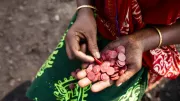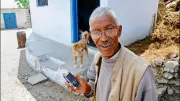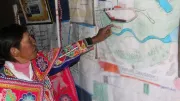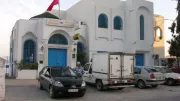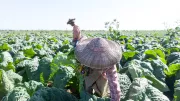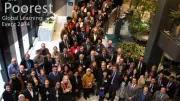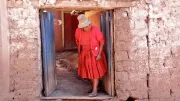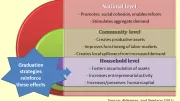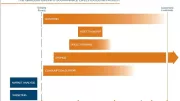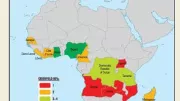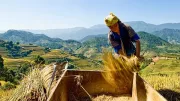Recent Blogs
Blog
Preventing the Digital Trail from Going Cold: Lessons from Mexico
In recent years, digitizing and delivering Government to Person social payments into individual recipients’ bank accounts has been considered a potential gateway to financially include significant numbers of poor people. A five-year project in Mexico is analyzed to help answer key questions.Blog
Water by Phone: Transforming Utilities in the Developing World
As World Water Day is being recognized around the globe this Saturday, we take a look at how mobile money is making clean water more affordable and accessible in Kenya.Blog
Transitions from OTC to Wallets: Evidence from Bangladesh
Despite being a relative newcomer in the mobile financial services arena, Bangladesh is already making its mark.Blog
Do Mobile Money Clients Need More Protection?
On this year’s World Consumer Rights Day, Consumers International has chosen a timely target: mobile phones. We take a look at some critical questions that must be asked to ensure the poor are being adequately protected.Blog
E-Payments in Low-Income Settings: Cutting-Edge or High Risk?
Seen as having great potential for advancing the effectiveness of social and foreign assistance, e-payments can increase efficiency in a variety of ways. Four case studies take a closer look at programs in Haiti, Kenya, The Philippines and Uganda.Blog
Given Opportunity, Extreme Poor Take Destiny Into Their Own Hands
At the global level, the extreme poor are those living with less than $1.25 a day, estimated in 2012 to be nearly 1.2 billion people. The Graduation Approach is not a silver bullet to ending extreme poverty. But it seems to hold real potential.Blog
La Poste Tunisienne: A Powerful Tool for Financial Inclusion
There are six million postal financial accounts in Tunisia, impressive for a population of 11 million. In fact, La Poste is the best known and first cited financial institution in Tunisia and shows great promise for financial inclusion.Blog
Charting Times of Change: Money Practice and Behavior in Myanmar
A seven-person team heads to Myanmar to understand the formal and informal ways in which the poor transact, save and invest.Blog
Postal Networks: a Physical Link to the Digital Economy
The latest White Paper from the U.S. Postal Service exploring the potential to build its existing financial services products to help the poor is getting a lot of ink in the press, and rightfully so.Blog
Graduation Model: Ready to Scale Up?
The benefits of the Graduation Approach are clear. Optimism around this approach was reinforced in Paris last week when about 100 experts and policymakers discussed how to integrate it into other policies and programs.Blog
Graduation Programs as Part of Targeted Social Policy
After more than 15 years, conditional cash transfer programs have become the backbone of targeted social policies in Latin America. But we must create programs that maintain progress while continuing to move people out of poverty and into sustainable livelihoods.Blog
How the Graduation Approach Fits Into Social Protection Programs
This past decade has seen an exponential growth in social protection programs. When appropriately designed and implemented, these programs tackle poverty and vulnerability and promote positive developmental outcomes.Blog
Poverty, Social Assistance and the "Graduation" Agenda
The big picture of poverty reduction trends and forecasts are encouraging but imply increasing complexity for poverty reduction strategies. This blog takes a closer look at the role of social assistance in the context of the Graduation Approach.Blog
How Can the Poor Embark on a Pathway To Sustainable Livelihoods?
Creating appropriate and effective pathways for people to escape extreme poverty is a complex challenge. At CGAP one solution we are exploring is the Graduation to Sustainable Livelihood Approach, which uses a variety of interventions.Blog
Designing Mobile Microinsurance Products: Premium Payment Methods
Mobile microinsurance products are not only growing in number, but they are also reaching people in many of the world’s poorest countries.Blog
How Greenfield MFIs Advance Market Development in Africa
A report from CGAP and IFC explains how greenfield microfinance institutions help advance financial market development in Sub-Saharan Africa. The most significant effect of greenfield MFIs appears to be their contribution to professional development in the banking and microfinance sectors.Blog
The Global Landscape of Mobile Microinsurance
Since 2010, two-thirds of all new mobile microinsurance products were launched in low-income countries, particularly in Sub-Saharan Africa. A number of these were by non-traditional players innovating through new channels and with new products.Blog
Could India’s Unique ID be a Financial Inclusion Game-Changer?
The Indian government’s plan to provide every resident with a unique biometrically linked identity number is an exciting development for those of us dedicated to broadening financial access to unbanked people worldwide.Blog
Understanding Smallholder Demand for Financial Services
Smallholder families represent the largest global segment of those living on less than $2 a day, yet relatively little is known about their demand for financial services.Blog



